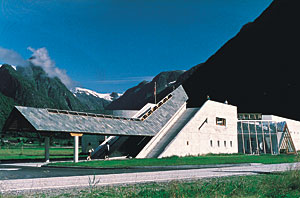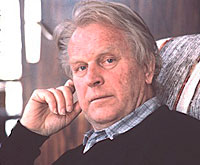|
Sverre Fehn, the prominent Norwegian architect, died on February 23. He was 84.
Fehn, known for fusing Modernism with traditional Scandinavian architecture, was the recipient of many of the profession’s highest honors, including the Pritzker Prize, which he received in 1997. In the Pritzker award citation, juror Ada Louise Huxtable lauded Fehn’s work for its “extraordinary richness, perception, and quality” and said it “represents the best of 20th century Modernism.”
After graduating from the Oslo School of Architecture in 1949, Fehn joined a group of designers devoted to finding a uniquely Norwegian expression of Modernism. In 1954, he formed his own practice, Ark Sverre Fehn, in Norway, where the majority of his work was built. Fehn also taught architecture from 1971 to 1995 at his alma mater, now called the Oslo School of Architecture and Design.
In an interview with RECORD in 1997, Fehn stated: “I was always called a Modernist. I tried to run away from it all my life, but didn't succeed.” While he worked briefly for Jean Prouvé and was influenced by Corbusier, Fehn’s use of earthy materials, particularly wood and rusticated stone, set his work apart from other modern masters. Moreover, Fehn saw a lyricism in architecture that was at odds with the mechanistic rationality of the Modern movement.

Fehn gained international acclaim for his design of the Norwegian Pavilion at the 1958 World’s Fair in Brussels, and again four years later for his Nordic Pavilion at the Venice Biennale. The Venice building, which contained three living trees that shot up through the roof, illustrated Fehn’s opinion that “building is a brutal confrontation of culture on nature, and in that confrontation you can find balance and beauty.”
For a career as long as Fehn’s, relatively few of his designs were actually built. Among his completed projects, perhaps the best known is The Glacier Museum in Fjaerland (1991)—an angular composition in cement, glass, and timber that sits at the base of snow-capped mountains. Bill Lacy, FAIA, former executive director of the Pritzker Prize, says Fehn didn’t have a large office and was practically a “one-man show.” “He was not prolific,” Lacy adds, “but he put his heart and soul into each project.”
Fehn is survived by his son and four grandchildren. His final project, the Norwegian Museum of Architecture in Oslo, opened in 2008.



Post a comment to this article
Report Abusive Comment